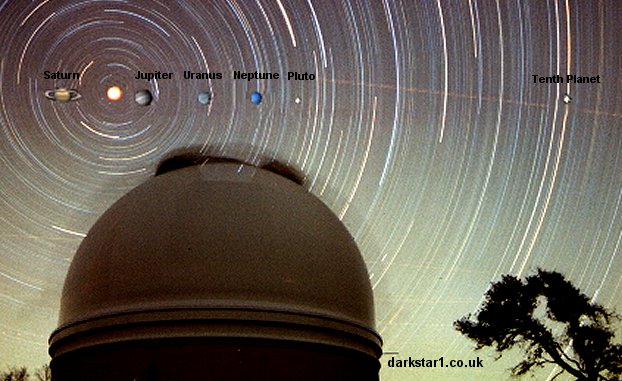Recall that scientists have discovered a 10th planet that they are unofficially calling Xena.
Here's Andy:
Andy calls "Planet X", or "Nibiru" as some call it, "the Dark Star, " as if you cared about any of this.For those interested in the more esoteric aspects of Planet X research, it is important to state that this is not Nibiru. The planet is a rocky, icy world similar to Pluto, and it is certainly not a big player in the evolution of the Solar System! Instead, it is one of many such worlds lying in the Edgeworth-Kuiper Belt, albeit being a particularly large example.[...]
Xena appears to share many characteristics with Pluto. It has a highly reflective surface, which may indicate a layer of ice. This contrasts with Sedna, and some of the other outer planetary bodies, which has reddish surfaces. I wonder whether these two diverse sets of minor planetary bodies (some white, some red) may tell us something about their origins? It has been speculated that the reddish appearance of Sedna may have resulted from collisional activity early in the life of the Solar System, or even that Sedna is a captured object. Whatever the truth of this, Xena does not appear to have the same controversial surface characteristics, despite its eccentric orbit. Mike Brown writes:
"Pluto and the new planet are not completely identical, however. While Pluto's surface is moderately red, the new planet appears almost grey. We are only now beginning to try to understand why the colours differ so." (4)
My opinion on this is that the reddish coloured minor planets of the Edgeworth-Kuiper Belt have been affected more or less directly by the Dark Star at some point.
[...]
Astronomers who, only a few years ago, were arguing adamantly that there would be no tenth planet to be found have been proven wrong! There is a lot of undiscovered territory out there, with many more discoveries to be made. I am quite convinced that one of those discoveries will be an actual binary companion to the Sun, which I call the Dark Star, in the form of a sub-brown dwarf. It is likely to be 5-10 times as far away as this new planet. As interest in outer solar system increases among astronomers, the probability of a discovery in the near future must be steadily improving.














No comments:
Post a Comment
Comments are moderated. There may be some delay before your comment is published. It all depends on how much time M has in the day. But please comment!